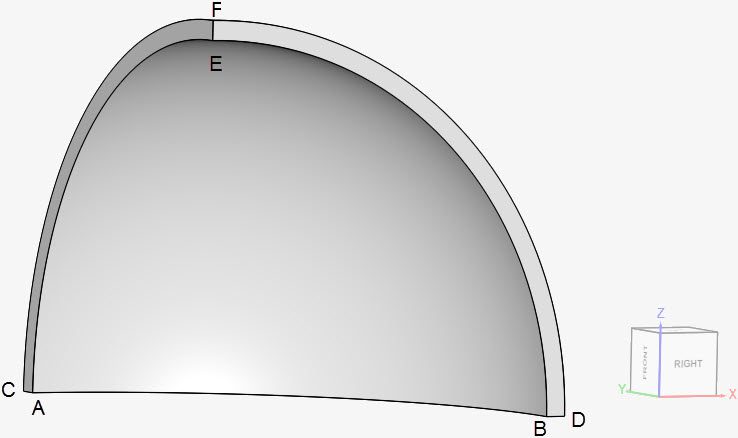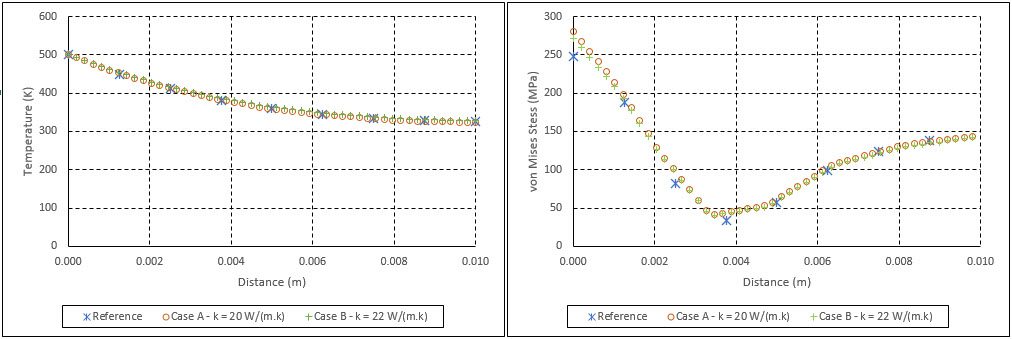Documentation
This design analysis of a spherical pressure vessel validation case belongs to thermomechanics. This test case aims to validate the following parameters:
The simulation results of SimScale were compared to the analytical results presented in [Afkar]
The geometry consists of 1/8th of a sphere, with an inner radius of 0.19

The coordinates for the points in the sphere are as tabulated below:
| A | B | C | D | E | F | |
| x | 0 | 0.19 | 0 | 0.2 | 0 | 0 |
| y | 0.19 | 0 | 0.2 | 0 | 0 | 0 |
| z | 0 | 0 | 0 | 0 | 0.19 | 0.2 |
Tool Type: Code_Aster
Analysis Type: Transient thermomechanical, linear
Mesh and Element Types: The mesh for cases A and B was created with the standard algorithm, with first order elements.
The setup from cases A and B is the same, except for the thermal conductivity
| Case | Mesh Type | Nodes | Thermal Conductivity | Element Type |
| (A) | 1st order standard | 172833 | 20 | Standard |
| (B) | 1st order standard | 172833 | 22 | Standard |
Find below the mesh used for both cases. It’s a standard mesh with first order tetrahedral cells.
Material:
Initial Conditions
Temperature is 300
Boundary Conditions:
The analytical solution is given by the equations presented in [Afkar]
Since no value for thermal conductivity

In Figure 4, we can see how temperature is changing in the sphere’s width, for the last time step:
Last updated: November 7th, 2023
We appreciate and value your feedback.
Sign up for SimScale
and start simulating now